
To the place where "good design" was created
Good design, excellent design, design that opens up the future, ideas that move people's hearts, and actions that lead society always have small beginnings.
Interviews with designers at the birthplaces of good design to find hints for the next design.
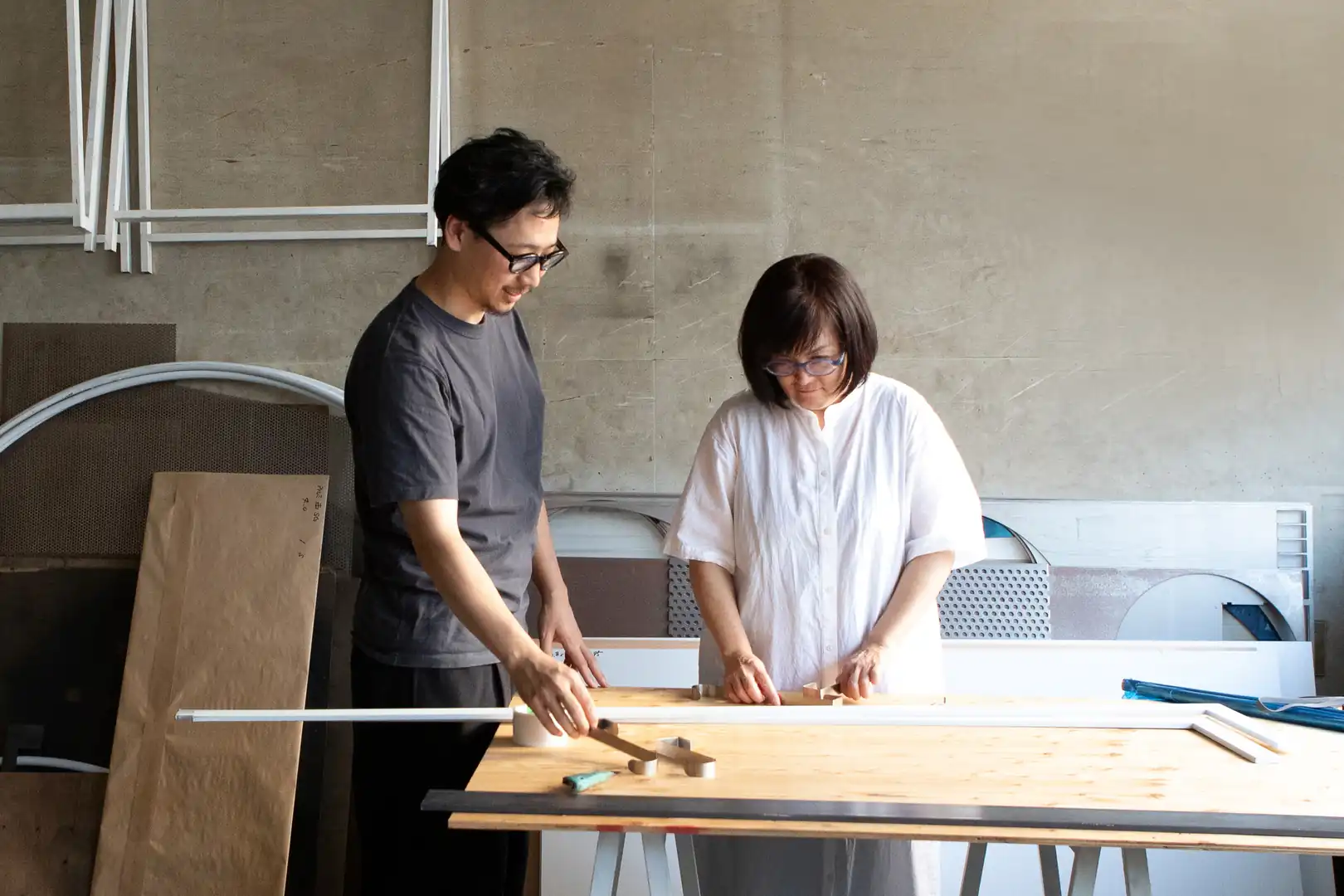
Destination
KaB DESIGN INC.
Design Expands the Potential of Resin (Part 2)
2024.10.21
These 9º (Kudo) containers, which can be used for cooking, were selected for the GOOD DESIGN BEST 100 in fiscal 2018. This project started from a desire to raise the value of resin (plastics), which are often thrown away. While making the most of resin’s functions, 9º brings out a new look for the material and has attracted fans. How was this possible? We asked Yoshiko Saito and Mikito Ichinohe of KaB DESIGN to talk about the source of their ideas and their design work. (Part 1)
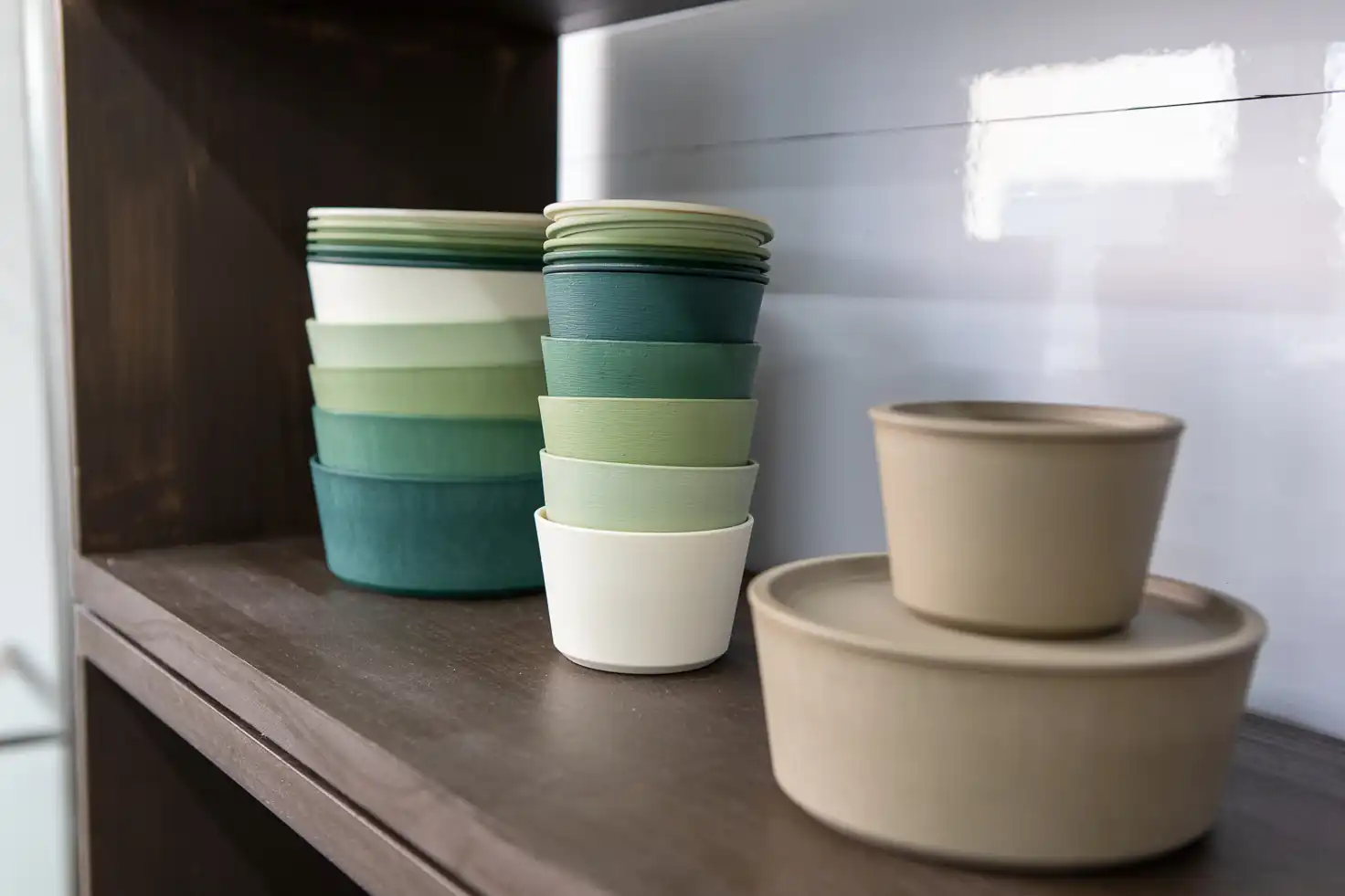
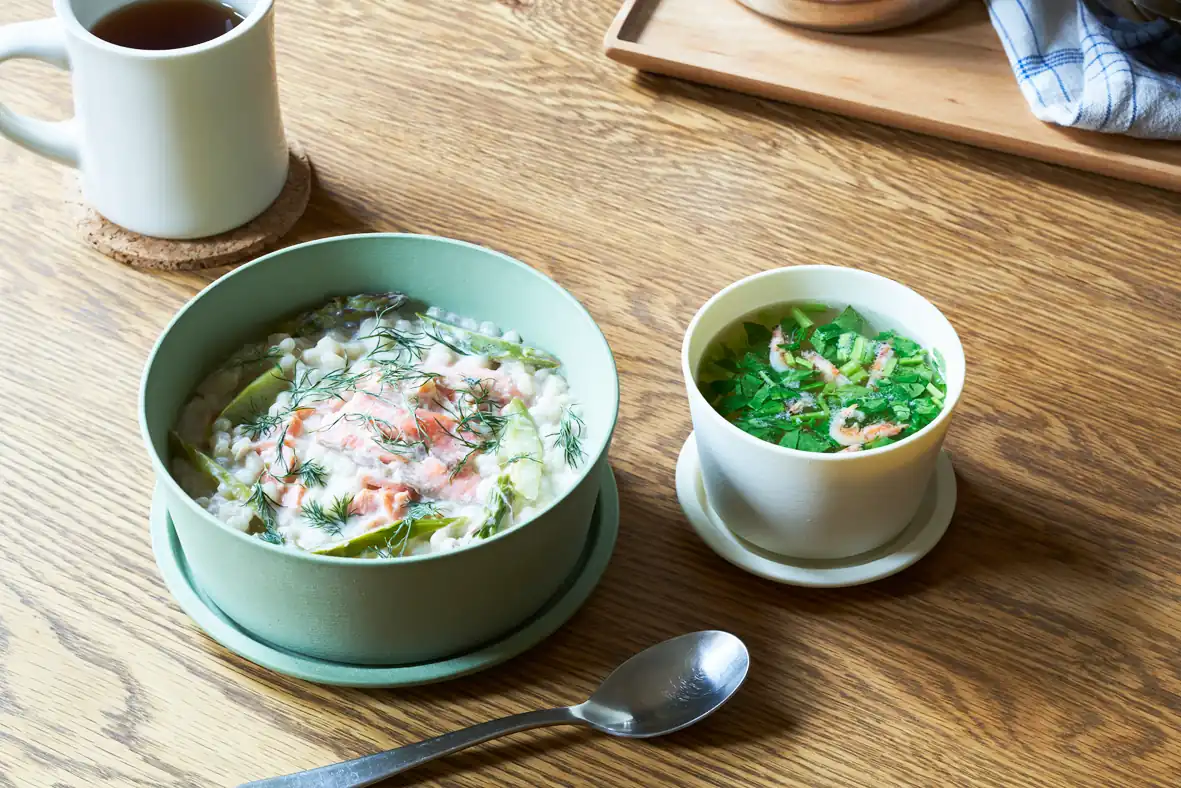
Four design processes which anticipate everything through to brand cultivation
— Although KaB DESIGN is a design company, you are even responsible for sales of the 9° (Kudo) brand. You not only design the colors and shapes of the products, but also think about the project from the planning stage, and what’s more, consider how to deliver the products to the end users. It feels as though implementing all of the processes, from planning and development right through to sales, is a new domain for design. I would like to ask you about the activities of KaB DESIGN, which form the basis of how this was possible.
Yoshiko Saito (CEO, KaB DESIGN) It's true that if you just look at 9° from the perspective of the product alone, you may not understand why this kind of thing came about. Our approach to design and making things, our network, and all our activities, including those outside of 9°, have a connection with 9°.
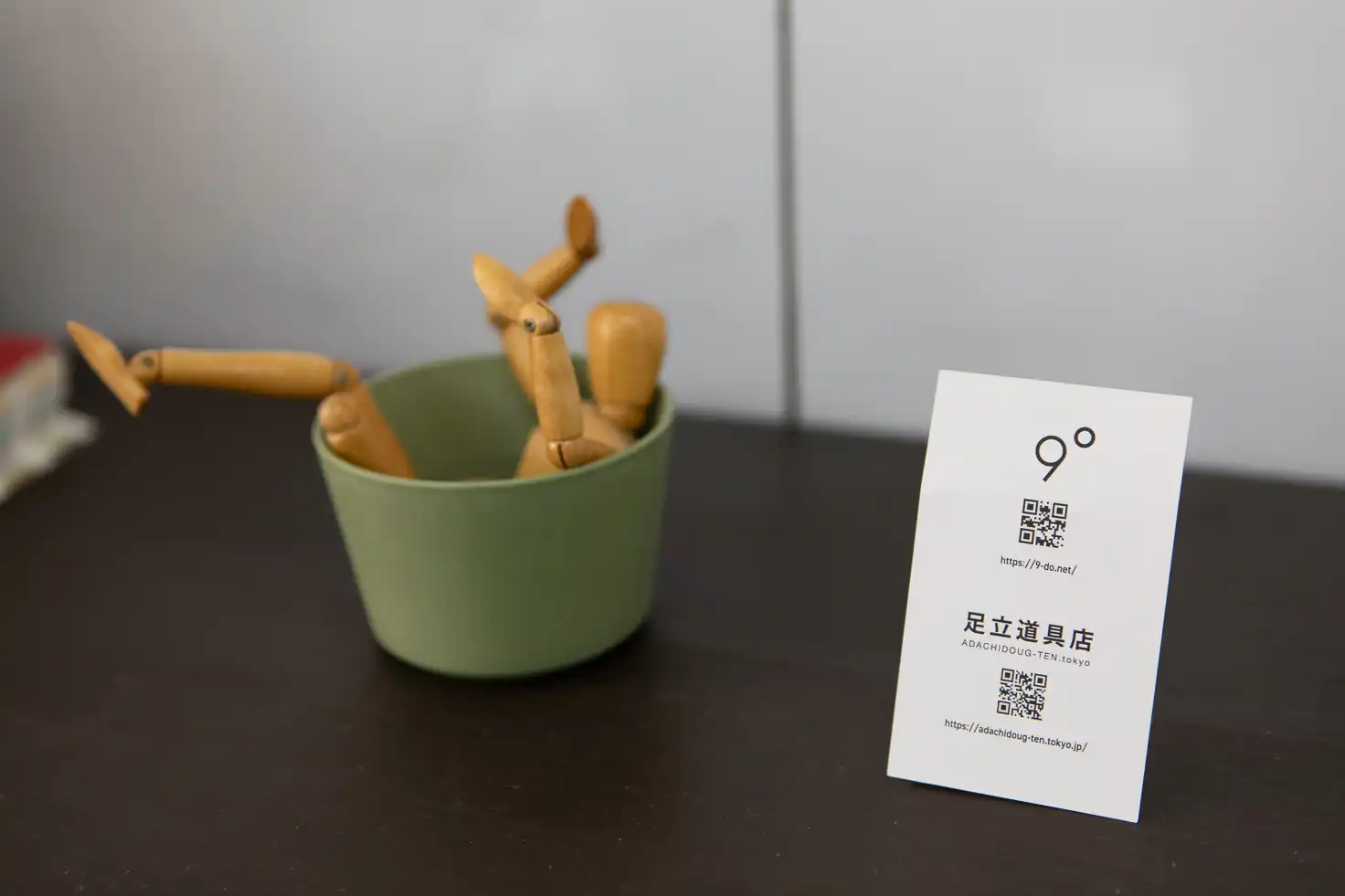
Mikito Ichinohe (Designer, KaB DESIGN) In our client design business, KaB DESIGN carries out “design accompaniment support” for companies that want to develop their own products centered on product design.
— In recent years, “accompaniment support,” which addresses issues over the medium to long term and includes the building of systems, has been attracting attention. How do you make this happen in design?
Saito We make use of the “4 Phases, 16 Processes” scheme, which we developed in-house. We have established four processes for each of the four phases of “Planning,” “Development,” “Dissemination,” and “Cultivation,” with the aim of achieving sustainable growth. The scope of our work includes putting design into practice from manufacturing through to the subsequent cultivation of the brand, fostering its “uniqueness.”
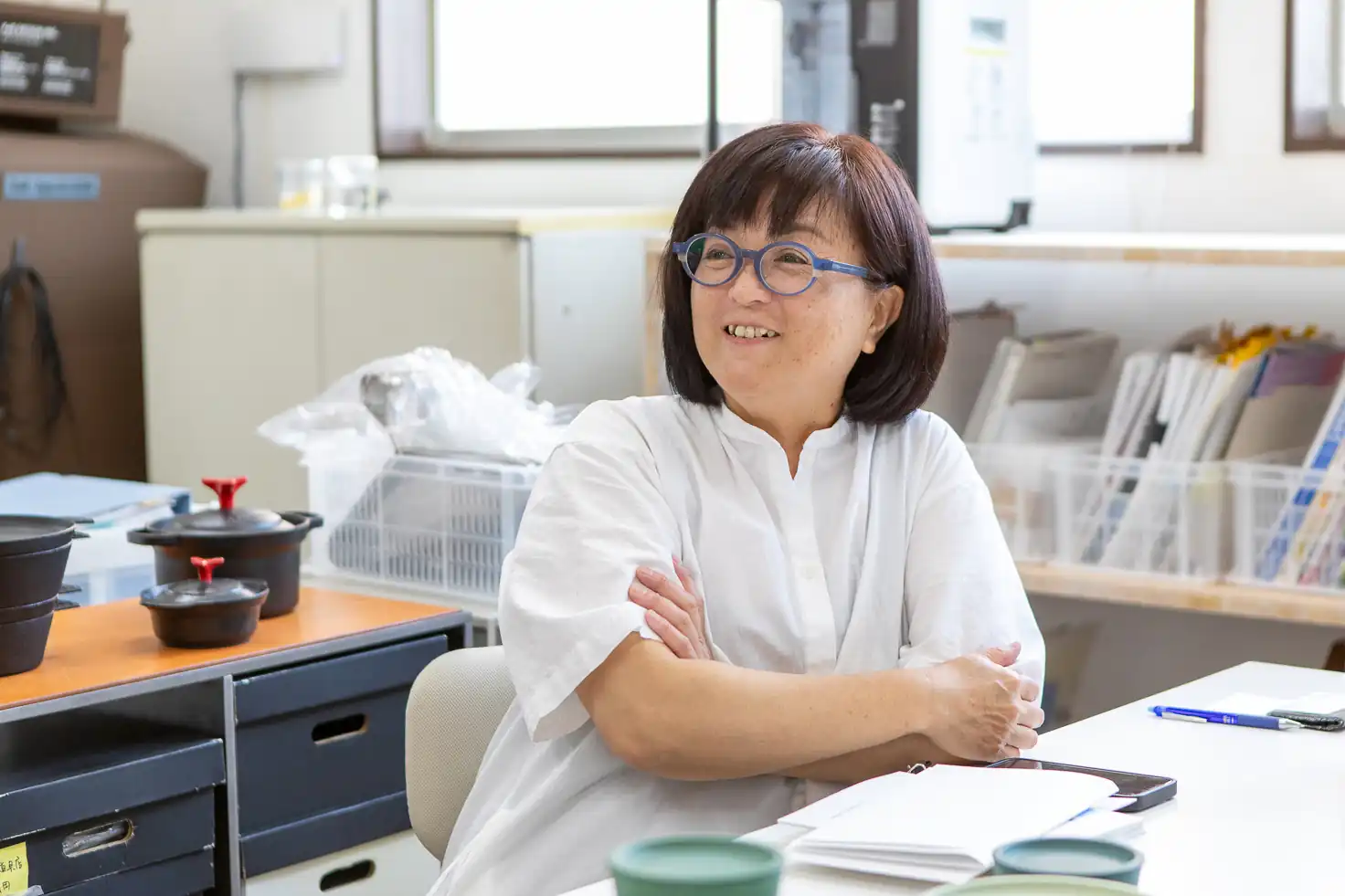
Saito As well as commenting that 9° was “simple and beautiful, heralding new possibilities for plastic containers,” the judges of the GOOD DESIGN AWARDS praised the cultivation part of the process, saying “We would also like to commend your efforts to continuously nurture your brand, such as publishing original recipes online, rather than stopping once the product was completed.”
Ichinohe The work which we take on can be broadly divided into the areas of everyday items and industrial equipment. In the everyday items category, we design things like furniture and kitchenware. In terms of industrial equipment, we have designed office gates installed at the entrance of office buildings, ground-penetrating radar used in road construction, and cleaning robots, among others. We also launched two product brand businesses in 2017.
One is 9°, which we've been talking about, and the other is ADACHIDOUG-TEN, a brand in which we make the things which we use everyday together with craftsmen in Adachi City; we are also responsible for these sales.
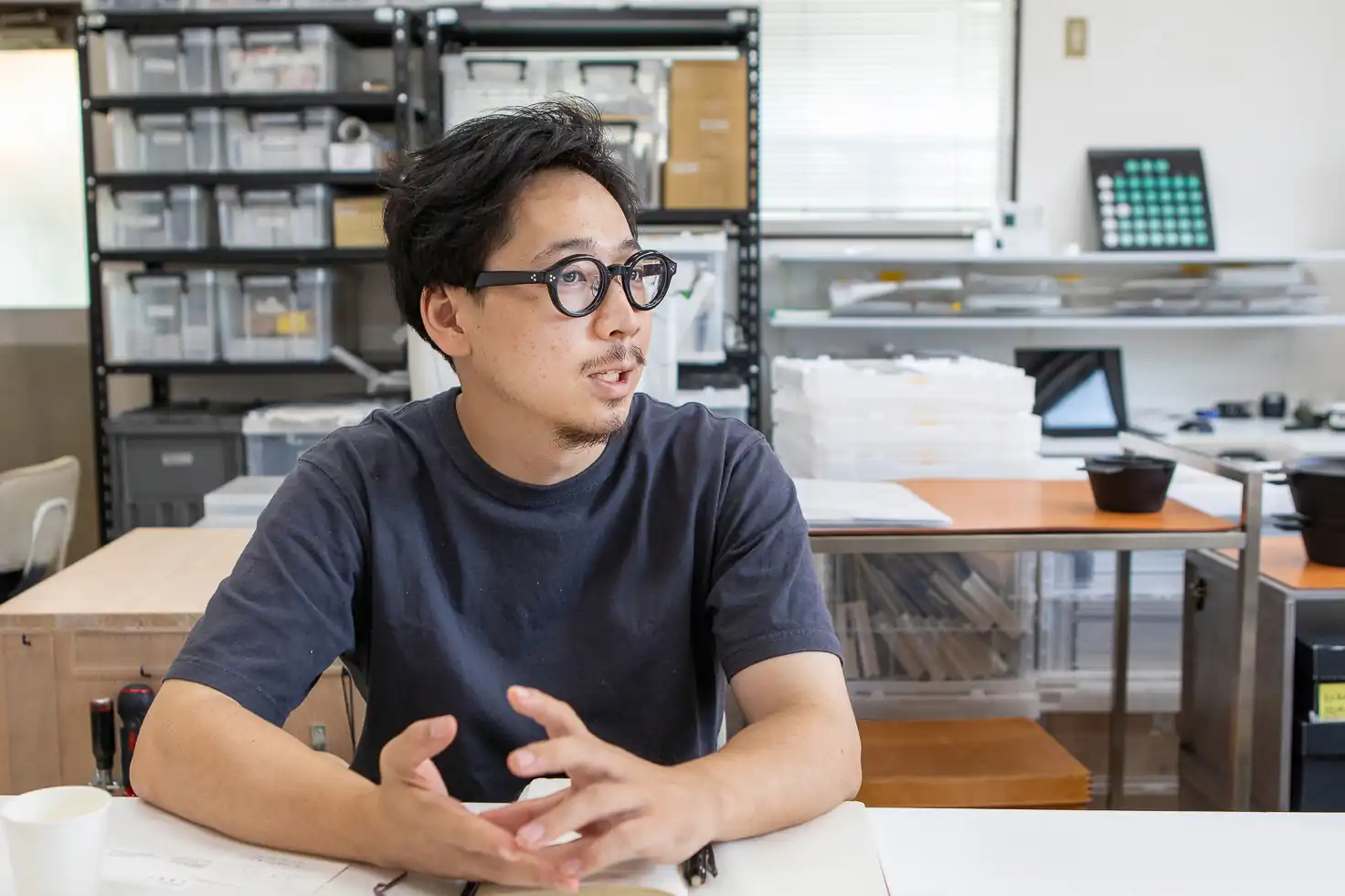
— In addition to 9°, Ms. Saito has twice worked as an external designer on products that have won GOOD DESIGN AWARDS.
Saito The SG-Center Flap1500 office gate (Nippon Signal) received a GOOD DESIGN AWARD in 2007. In addition to its function as a piece of equipment, an office gate is also an element that serves as the “gateway” to a company, so we thought about creating a design that would blend in with a sophisticated building or office.

Saito In 2010, the Kawaguchi cast iron pot “KAWAGUCHI i-mono HOTPAN” (Ito Tekko) received an award. I made a point of giving it a shape that looks delicious on the stovetop, oven, or table, allowing it to be used frequently in everyday life.
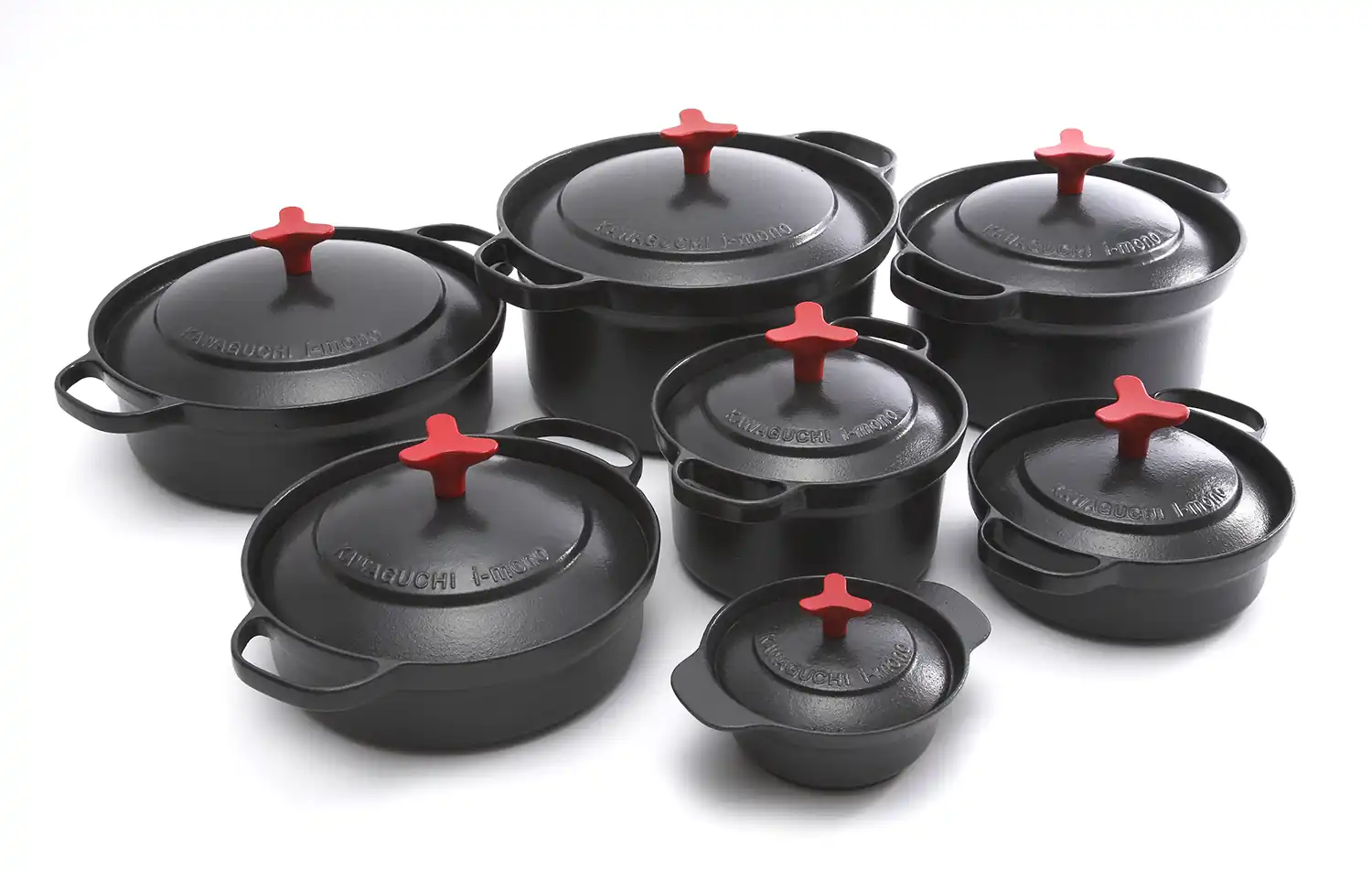
— From pots to infrastructure – that’s a broad range, isn’t it? Rather than accumulating experience in the same field, it looks as though you try your hand at many different fields; doesn’t this make things more difficult?
Ichinohe It’s not something that feels particularly hard. Of course, we need specialized knowledge about materials and techniques, and we study these; but the fundamental part, how to give shape to what you want to do, doesn’t change.
Mistrust of design
Saito Currently, when we receive a design request, we communicate our “4 Phases, 16 Processes,” and start by sharing the overall development scheme. And so I feel that in more cases, our client companies are convinced about which domains they are investing in and why.
The approaches used to deliver the products to customers also differ between B2C and B2B, so we need to remain aware of these exit points as we develop the items. I am always thinking furiously about the role of design and what KaB DESIGN ought to do when it comes to the projects requested of us.

Ichinohe I am responsible for the design development of B2B and B2C projects, and my experience of cultivating the 9° brand is useful here.
Saito In the past, I carried out all KaB DESIGN’s activities by myself, but at that time, I was concerned that people mistrusted design. When I tried to propose a project to a company, I felt that in quite a few cases they didn't trust me because they thought that a designer just drew a picture and said “We can make something like this;” they didn't know what a designer could do.
— Your own products go through various processes before they are done. It might be difficult to imagine that designers consider everything about manufacturing when designing, from the fundamental stages right through to the user, even as they are each responsible for their own work.
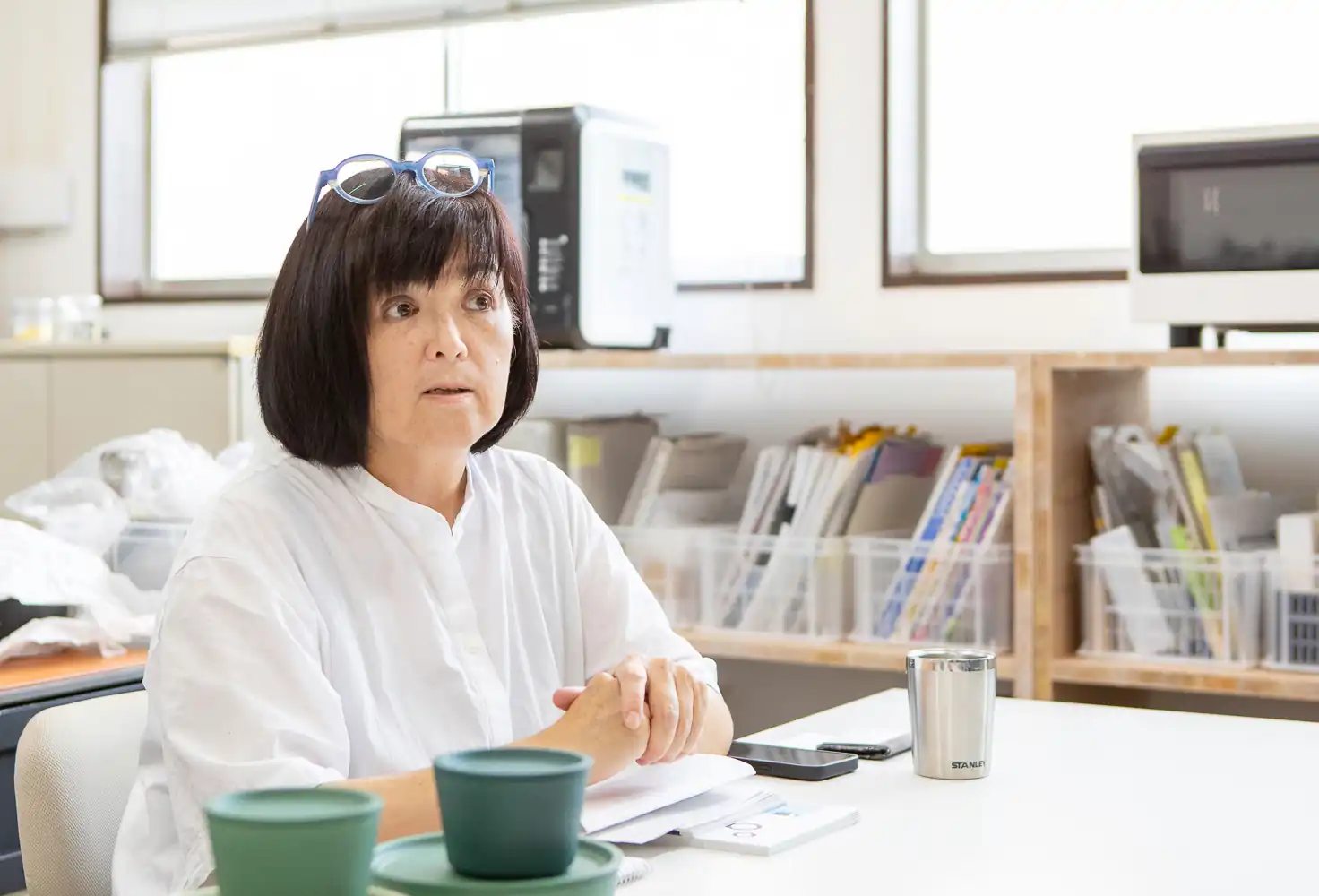
Saito I continued steadily with my activities, although I wondered if this were the reality. But when Mr. Ichinohe joined the company, and we launched 9° as a brand, started ADACHIDOUG-TEN, and started to spread the word while building a sales record, the people around us began to change, little by little.
I think that sharing goals among project members and getting closer and closer through repeated communication were the factors that brought about the change from mistrust to trust.
Adachi City is one big workshop
— Please tell us why you started ADACHIDOUG-TEN to develop everyday goods with artisans, alongside your work on 9°.
Saito The biggest reason is that I've lived in Adachi City for a long time (laughs). I had a strong desire to continue making things in Adachi City. We rent this office on the second floor of Fukuzawa Seisakusho, a metalworking company. We have a relationship with Fukuzawa Seisakusho, who produce the prototypes for various of our projects; we have been working with them for a long time.
The craftsmanship of the manufacturing companies in Adachi City, including Fukuzawa Seisakusho, is truly amazing, but they are often involved in Original Equipment Manufacturing or making parts, so they cannot easily publicize what they are doing. I wanted to do something about this.
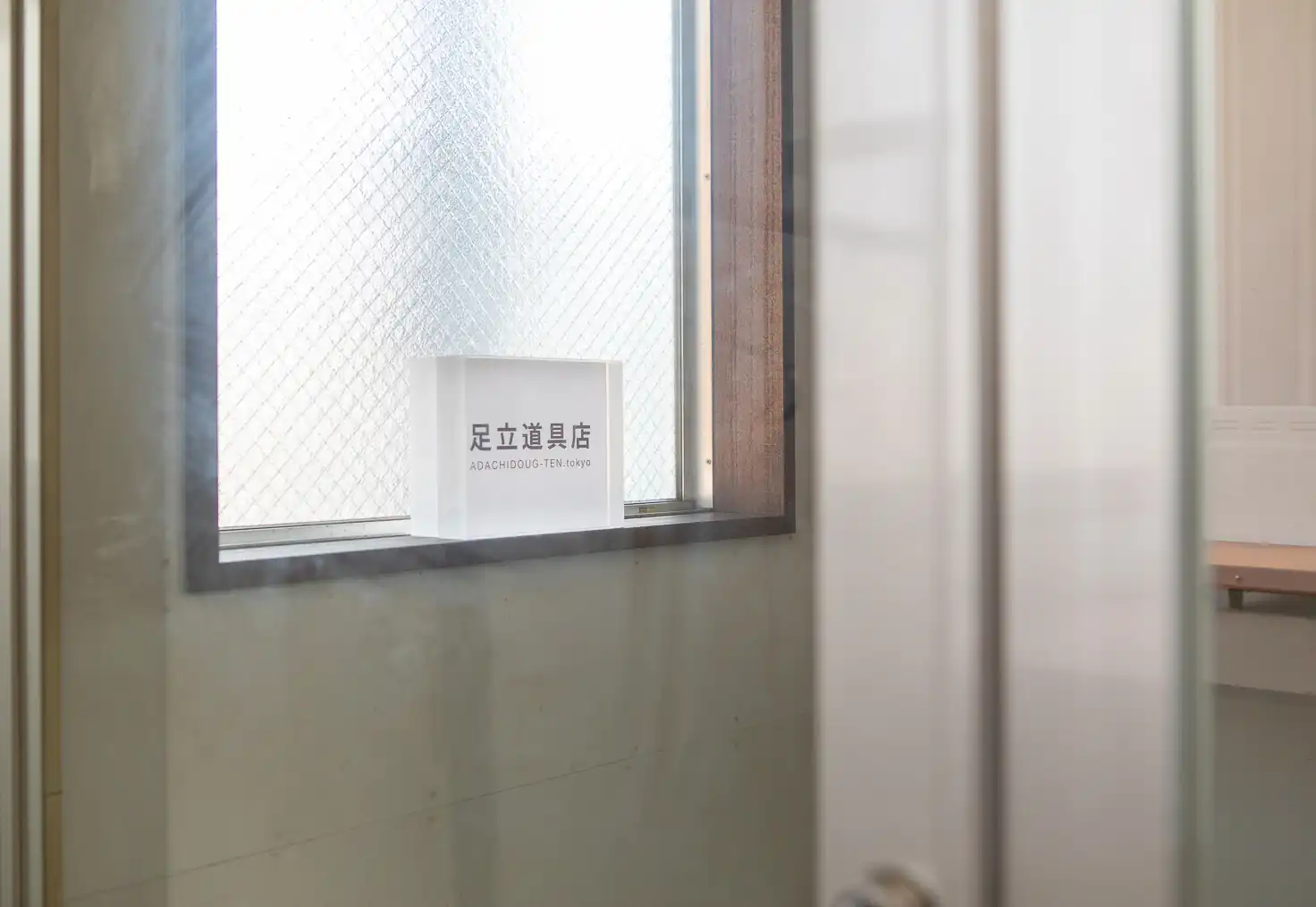
Ichinohe Adachi City is an area in which there are more than 2,000 workshops and similar sites where things can be made. The number of workshops is the second largest in Tokyo, after Ota Ward.
Saito There are many production areas that specialize in something particular, such as glasses in Sabae (Fukui) or household items in Tsubamesanjo (Niigata), but Adachi City is diverse and has a variety of small factories in operation, including those working with metal, resins, leather, or packaging. So the entire manufacturing process can be done here, from the processing of parts combining a variety of materials and techniques to assembly, finishing, and packaging. It's like one big workshop, and this is the attraction of Adachi City.
Manufacturing in a relationship between equals
Saito At ADACHIDOUG-TEN, we understand the technical capabilities of the factories, the distinctive characteristics of their materials, and the thoughts of the artisans and creators, and reflect these in our products. The relationship with the artisans and creators is an equal one, and the ADACHIDOUG-TEN brand was built as we worked together. Making and selling things is the basis, but creating relationships is also an aspect of making things.

Saito It's a lot of fun to create things in an equal relationship, rather than simply as the people giving out the work and the ones accepting it. We like to make things from the bottom up. But you can't make something unless you sell it, so you could say we sell things because we want to make them.
— You're doing things based on this way of financing them... How do you go about deciding what kind of product to make?
Ichinohe We are thinking of tools that can become favorites in people’s daily lives for a long time; not a gimmick, but something simple, strong, ordinary but of good quality.
Clothes hangers and S-shaped hooks are products that usually go unnoticed. The factories in Adachi City are responsible for work like Original Equipment Manufacturing for famous brands, but because of this, they don’t get any attention. I thought that the manufacturing in Adachi City and everyday items were similar in that way.

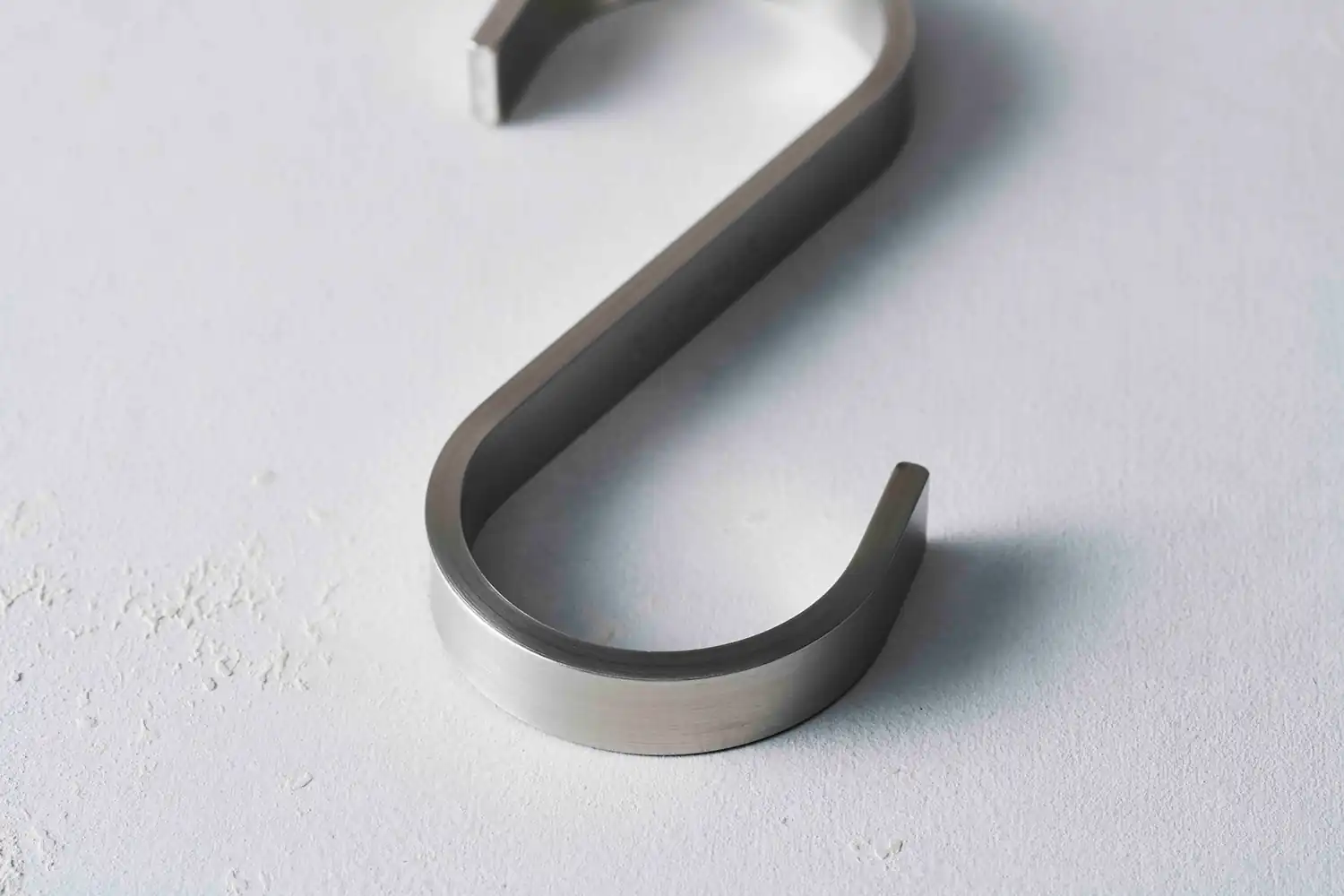
Ichinohe We get to actually see the factory and come up with our ideas based on what the craftsmen are making there. When I saw a metal rod bent into a ring shape, I came up with the idea of making carabiners.
— You are building a network with the factories, aren’t you? That’s the source of your ideas. Roughly how many companies are you in touch with?
Ichinohe At the moment, ADACHIDOUG-TEN is involved with about 12 companies, from making the products through to packaging them and printing. There are probably more than 20 workshops with which we are regularly in touch.
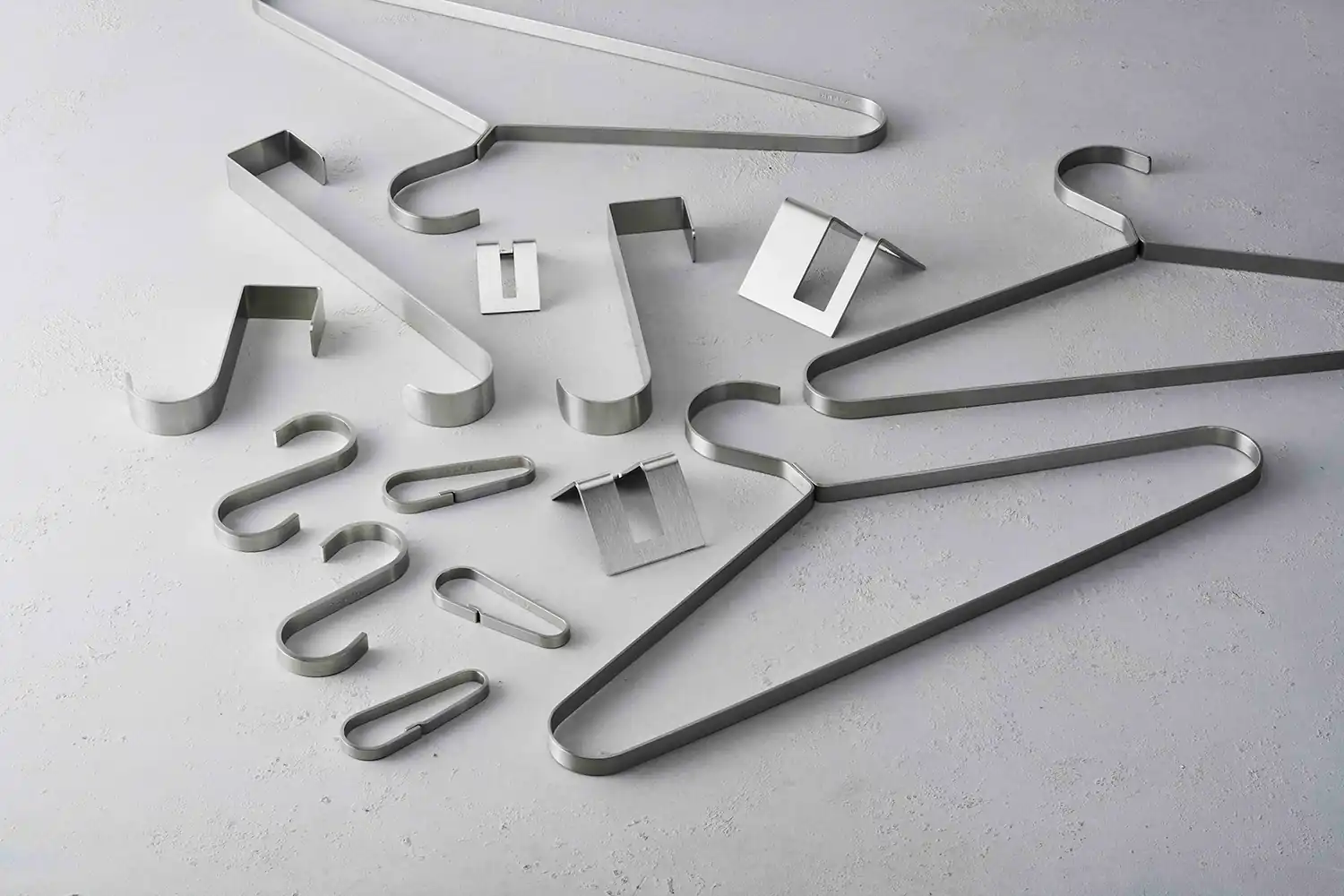
Everyday items which update your life
— I see. You are in regular contact with the production sites, so when someone asks you if you can do something new, you can find ways to go about solving the problem, saying “Maybe it can be done if we use the skills in this or that place...”
Ichinohe That’s our strong point at KaB DESIGN. We communicate with factories on a daily basis, so conversations move ahead quickly. We also invite ADACHIDOUG-TEN buyers to visit the factories to tell them the story of how the products are made and what kind of factories they are made in. This connects through to sales promotion.
— If you swap the ordinary tools which you use in your daily life for high-quality ones, I feel as though your life might change a little.
Ichinohe It makes you happy if you can update your life just a little bit – if you have carefully selected tools around you, doesn’t it? When we made the carabiner, we made prototypes in the factory, varying the thickness of the plate and the size, and finally made a decision on the basis of things like how comfortable they felt to hold.
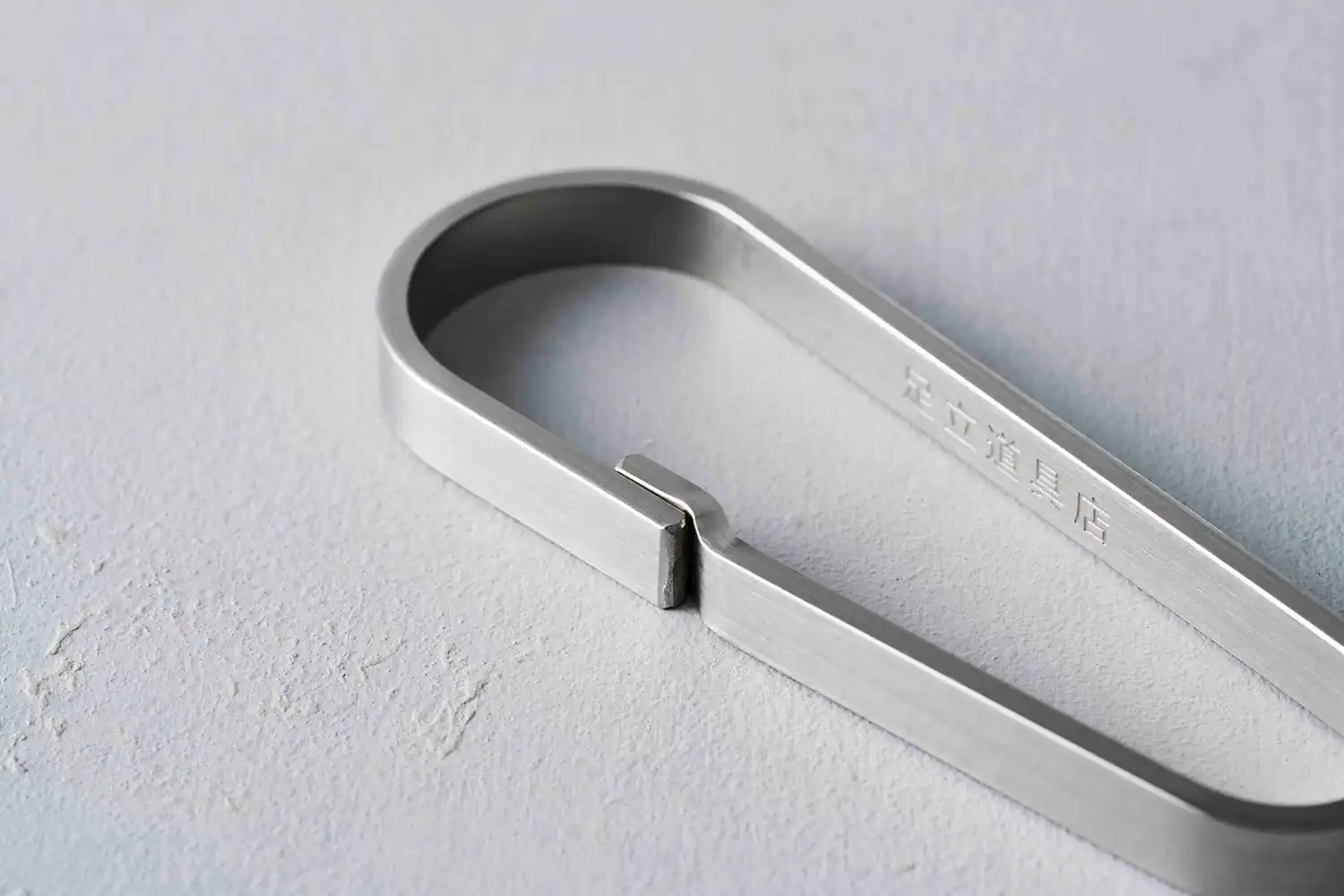
Saito It’s packed with attention to the tiniest points, every last detail, such as making the part which opens and closes and the main body flat, the position of the engraving, and so on.
Ichinohe Many people probably think that 100 yen stores are good enough for everyday items. It’s really amazing that they can make things for that price, but on the other hand, it’s also good to have things that have been made with great care.
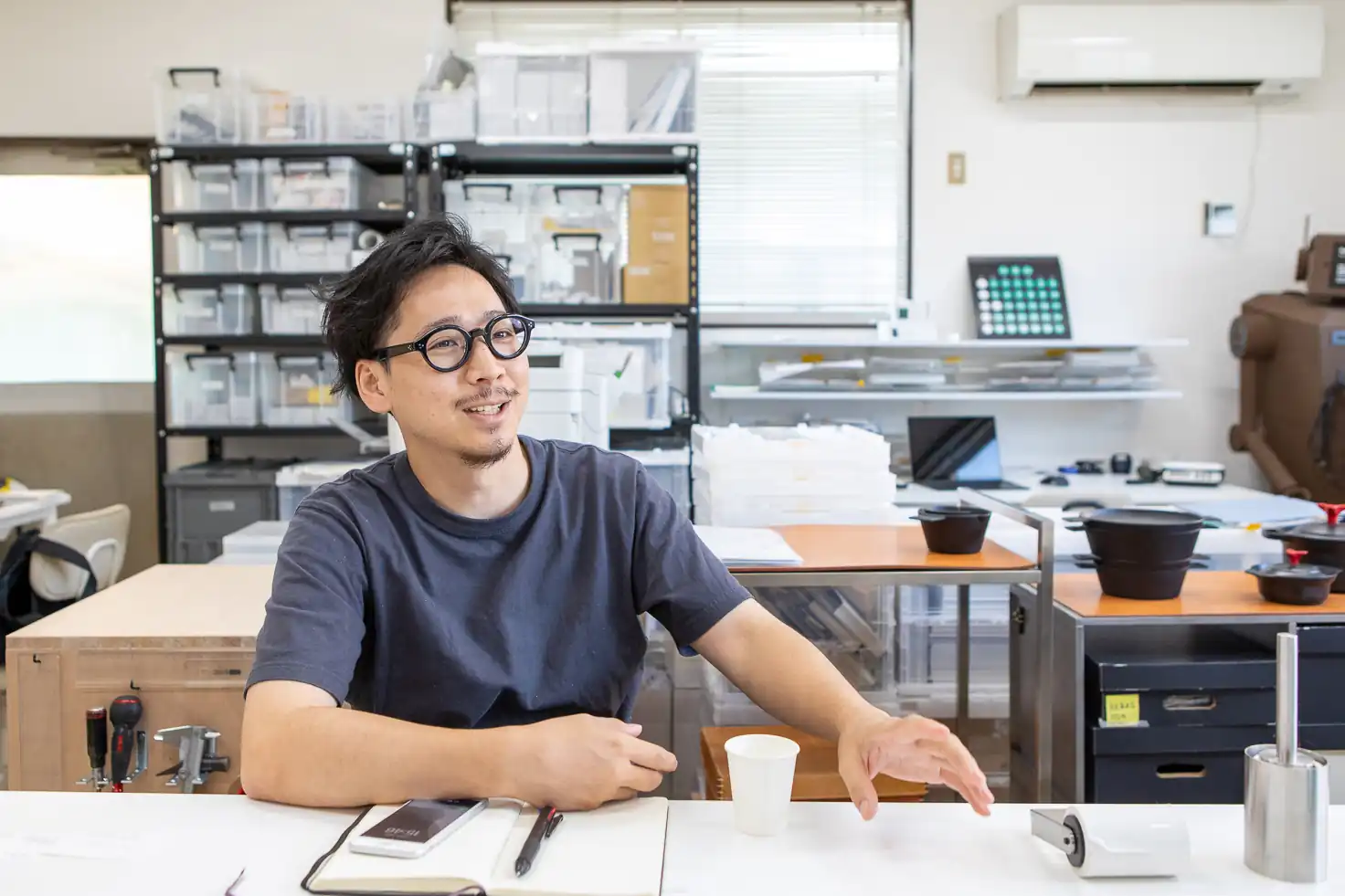
Ichinohe And so we tell people about the contexts of things so that these are made visible. When you choose something, choose it with care. It could be said that the mission of ADACHIDOUG-TEN’s products is to give people an awareness of being particular about what they use, starting from their everyday lives.
— Adopting tools chosen with care can change your everyday landscape. This is something which also applies to 9°.
Saito People who actually use 9° become fans, and they spread the word by posting 9° recipes and how to use the items on social media. We are thinking about developing a variety of colors and sizes in the future, although I think it will take time.
Think about how to roll out an item from the designer’s position
Ichinohe Even so, it was hard to get to that point. If you are a manufacturer without a sales function, you will run into a wall when it comes to selling. You can design. You can come up with a form and have it made. However, how to sell this out there in the world is a difficult question, and it requires quite a lot of effort.
Designers must understand this when they design, and they also need to communicate this to companies and be aware of it as they build a brand.
Saito However, I think we still have to improve the ways we communicate. 9° was selected as one of the GOOD DESIGN BEST 100, which gave us a boost, but there were hurdles in the way of translating this into sales, and it took time. We have to disseminate more information. I think the ability to communicate will become ever more necessary for designers in the future.
— It's not as simple as saying “We appointed designers and established a new brand,” is it?
Ichinohe The attitude that “If you ask a designer to make it, it will probably sell well” is hard for a designer. I think that collaboration works well when companies are willing to work hard together with you, taking into account the reality that we have to work so hard behind the scenes.
Saito If we have a relationship where we can work through difficulties together and deal with one another as equals, this process of making something is sure to be fun.
— Making things is about making them with people, and designers play the role of connecting the different people involved with making things, right? I feel as though I can see the reason for the warmth contained within 9°. Thank you very much for talking to us today.
kudo
KaB DESIGN INC.
These heat-resistant resin containers can be refrigerated and frozen, cooked in a microwave oven or steamer, and used in a dishwasher. In order to increase the value of plastic, which has become a disposable material despite its long service life, a product that can be used with love is realised. Designers and engineers started by working together to develop a unique new material. Currently, the designers are responsible for sales promotion and are building a new business model that provides experiential value through 9°.
- Award details
- 2018 GOOD DESIGN BEST 100 https://www.g-mark.org/en/gallery/winners/9dee09ca-803d-11ed-af7e-0242ac130002
- Director
- Yshiko Saito, Brand director
- Designer
- Yoshiko SAITO (Product design) + Masatoshi OHTAKE (Visual design)
Tomoko Ishiguro
Editor/writer
After working in the editorial department of “AXIS,” she became a freelancer. She writes, edits, and plans, with a focus on design and life culture. Her major editorial works include LIXIL BOOKLET series (book, LIXIL Publishing) and “Oishisa no Kagaku” (magazine, NTS Publishing).
Chieko Shiraishi
Photographer
She started photography after taking a black and white enlarger lesson organized by a town. After working as an assistant photographer, she is mainly active in taking photos for magazines, etc., while creating works in a darkroom.
Related Articles
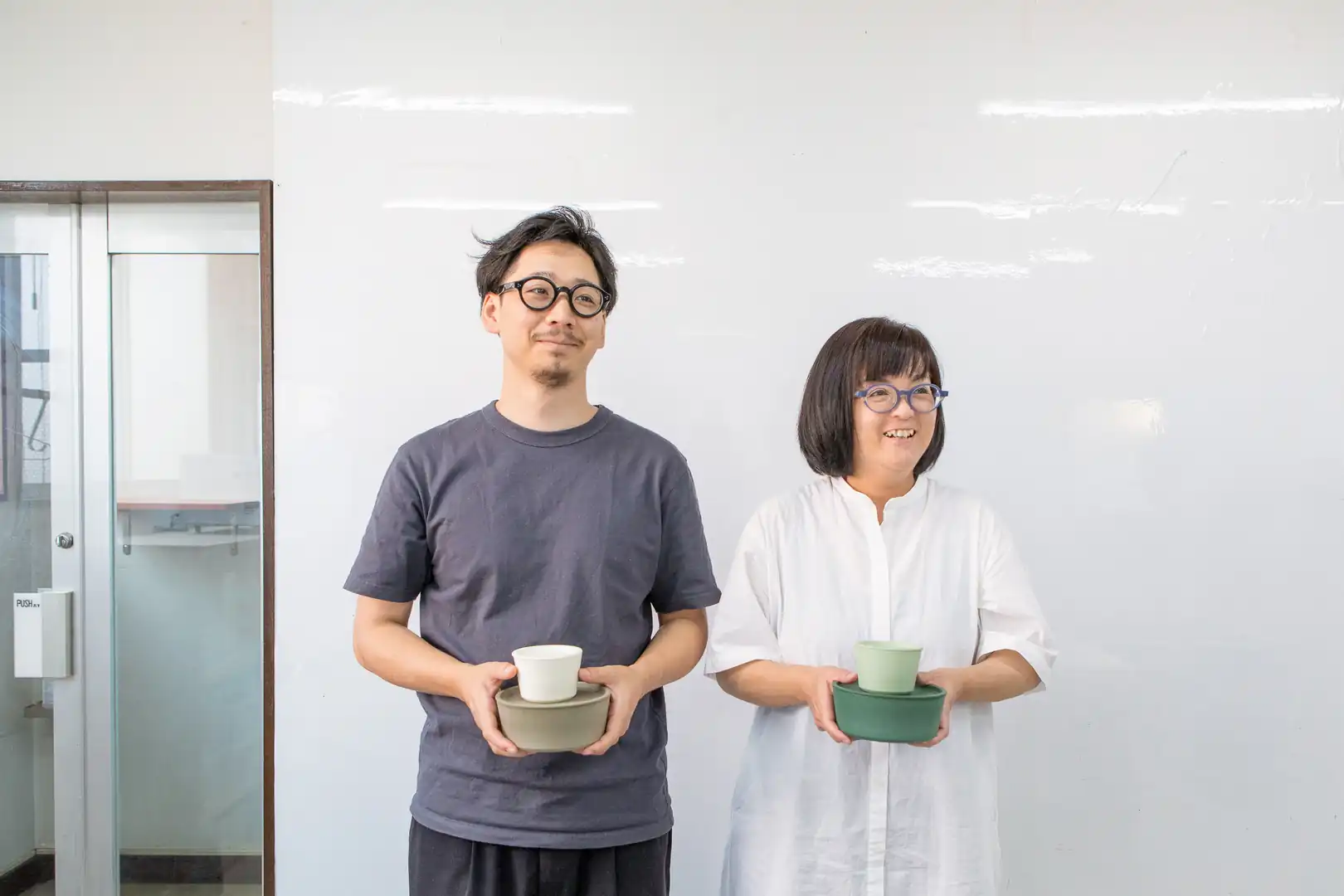
Design Expands the Potential of Resin (Part 1)
“I want to raise the value of resin!” The brand “9º” (Kudo) was born from these words, part of a conversation between a designer and an engineer who met at an exhibition. These containers, which can be used for cooking, were selected for the GOOD DESIGN BEST 100 in fiscal 2018. What underpinned this project was the desire for people to continue using plastic (resin) items, which are often thrown away, for all their usable life. How was the brand built? We asked Yoshiko Saito and Mikito Ichinohe of KaB DESIGN to give us some hints about how they developed their ideas from the smallest starting point into reality, despite twists and turns along the way.

Aiming at a toy that inspires everyone (Part 1)
This time we visited A4/A-Yon (OFFICE CAMP LLC), which makes “tumi-isi,” hand-processed and hand-painted building blocks, in Higashiyoshino Village, Nara Prefecture. The unique building blocks each have a different shape and can be enjoyed by children and adults alike. The product was selected as one of the GOOD DESIGN BEST 100 in 2021. Mr. Daimon Kanno, product designer, started production of the blocks in earnest in 2016, eight years after the first release. Why did it take so long? How has he faced and overcome the challenges? He spoke on these questions from a creator’s perspective.

Aiming at a toy that inspires everyone (Part 2)
This time we visited A4/A-Yon (OFFICE CAMP LLC), which makes “tumi-isi,” hand-processed and hand-painted building blocks, in Higashiyoshino Village, Nara Prefecture. The unique building blocks each have a different shape and can be enjoyed by children and adults alike. The product was selected as one of the GOOD DESIGN BEST 100 in 2021. Mr. Daimon Kanno, product designer, started production of the blocks in earnest in 2016, eight years after the first release. Why did it take so long? How has he faced and overcome the challenges? He spoke on these questions from a creator’s perspective.

To foresee the next steps, branding is crucial (Part 1)
In “GOOD DESIGN TANBOU(=exploring),” we take a look at the first small steps of good design through on-site interviews. Our first destination is Tsuboe Co., Ltd. in Tsubame City, Niigata, which won the GOOD DESIGN AWARD for two consecutive years for their graters. They revealed the history of the creation of their unique graters, and how design came to be integrated with everyday items.


